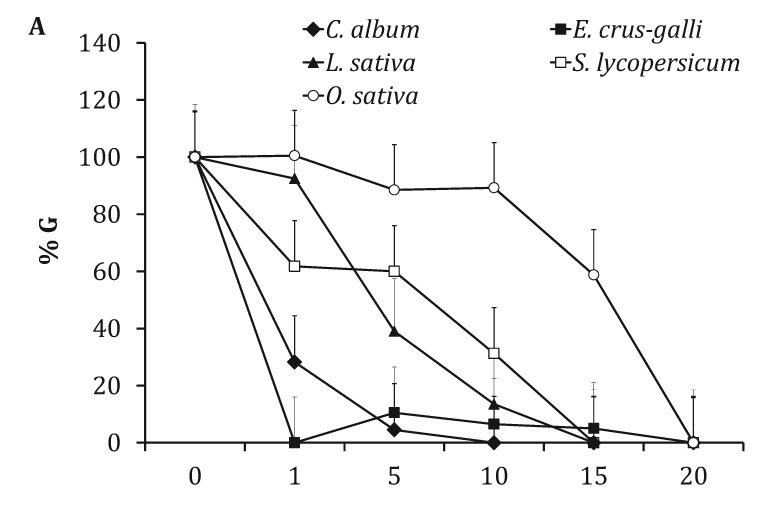Phytotoxicity of extracts of Dieffenbachia amoena, Nerium oleander, Raphanus sativus and Brassica napobrassica
Keywords:
plant extracts, germination, inhibition, vigorAbstract
The potential of plants as a source of bioactive principles has been little studied. The objective of this research was to determine phytotoxic activity of methanol extracts of Dieffenbachia amoena, Neriu moleander, Raphanus sativus and Brassica napobrassica on germination and seedling vigor of Chenopodium album, Echinochloa crus-galli, Lactuca sativa, Solanum lycopersicum and Oryza sativa. The variables evaluated were germination percentage and seedling vigor (radicle length, RL and aerial part length, APL). An analysis of variance and Tukey's comparison of means test (P ≤ 0.05) was performed. The methanol extracts of B. napobrassica and R. sativus showed the highest phytotoxic effect in comparison with the extracts of the other species, by affecting the germination of the seeds of E. crus-galli and L. sativa (96 and 99% at the concentration of 1%, and 90 and 100% at the concentration of 5%, respectively). Both extracts inhibited the growth of RL and APL of C. album, E. crus-galli, L. sativa and O. sativa; the only exception was S. lycopersicum. Glucosinolates were detected in the extracts of the Brassica napobrassica and Raphanus sativus species.
Downloads
Published
01-12-2017
Issue
Section
Plant protection
License
Aquellos autores/as que tengan publicaciones con esta revista, aceptan las Políticas Editoriales.



